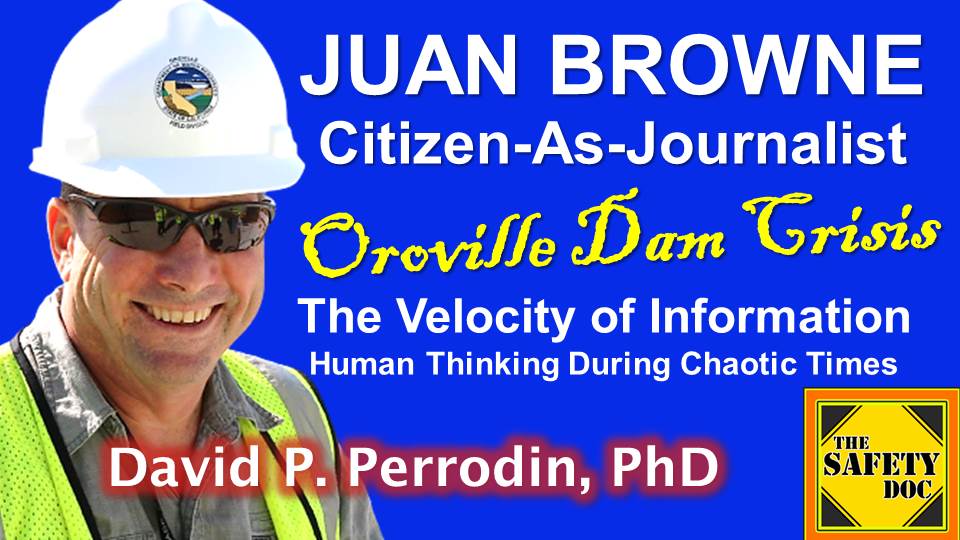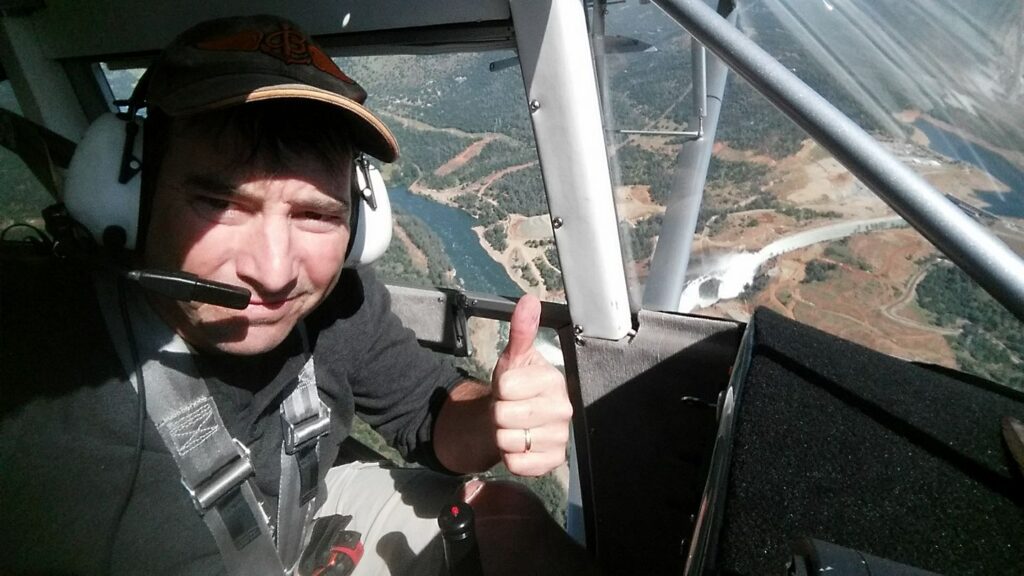Juan Browne | Oroville Dam and Citizen-As-Journalist | The Velocity of Information | SDP179
[Podcast] In 2017, America’s tallest dam complex had partially, but catastrophically, failed. The Oroville Dam, located in northern California, left operators scrambling to figure out how to manage a main spillway failure, eroding secondary spillway, and a rising water level in the reservoir. Remember those tense days when America was riveted to the nightly news for the latest updates? Remember the engineers who calculated that Sacramento, which is in a geological basin, would be hip-deep in water if the Oroville complex collapsed? The thing is, this didn’t make the nightly news – at least nothing more than five seconds of video and another ten seconds of narrative. But, that didn’t mean Americans, Californians, and people near Oroville didn’t have questions. They had a lot of questions. In fact, people across the world were thirsty for updates about Oroville – and they received them from Juan Browne. In this episode, Doc discusses Chapter 2: Face Validity, from his book, ‘The Velocity of Information – Human Thinking During Chaotic Times. He reads an excerpt about Juane Browne and the Oroville Dam and points out how there are reliable, organic journalists around us – and how we can responsibly break our own news to inform our communities and friends. David will reference pages 41-45 from The Velocity of Information.

DIRECT LINK to MP3 of this Episode: https://tinyurl.com/SDP179-AUDIO
THE OROVILLE DAM. Completed in 1968, Oroville Dam was a showpiece of the California State Water Project. Located on the Feather River, east of the city of Oroville and 70 miles north of Sacramento, the earthen embankment dam was used for flood control, water storage, and hydroelectric power generation. The dam was modern and, until 2017, had an insignificant history. But as all structures, entropy took its toll.
2017 SPILLWAY FAILURE. On February 8, 2017, during a routine water release, a large portion of the center spillway collapsed. With fears that continued use of the spillway could erode further toward the gates and completely collapse the structure, a decision was made to pass water over the emergency spillway. On February 11, 2017, Oroville Dam, America’s tallest, at 770 feet, overtopped and damaged its emergency spillway for the first time in its history, forcing the evacuation of nearly 200,000 people. The unnatural disaster took about one billion dollars to repair and caused millions more in property damage.
JUAN BROWN’S FIRST VIDEO OF THE DAM. “Just one day prior to the incident, on February 10, Browne made his first video about the dam. Fearing that the government would soon restrict air traffic over the site, Browne, a commercial pilot for American Airlines, got into his 1946 Luscombe 8A single-engine plane to offer the world the rarest of bird’s-eye view. Browne used a GoPro Hero5 camera to shoot the video. He added narration and published it to his YouTube channel, @blancolirio, the next day. The video immediately went viral. It has since amassed more than 500,000 views. In the five-minute, ten-second video, Browne shows a command of the scene, the situation, and the possible consequences of the dam’s failure. The view from 3,000 feet is intimate and dramatic. With no other planes in the sky, and no people at the site, the rarity of the vantage is apparent. One gets the feeling of being led on a backstage tour. Throughout, Browne’s tone is even and informative, never breathless or excited. “That’s the big concern going forward: how much erosion are we going to get?” Browne says at one point, summarizing the fears of his neighbors who were watching. That concern was justified.

BROWNE BECAME THE TRUSTED SOURCE. Up in the air, seeking truth, and answering the questions that mattered to neighbors fearing for their futures is when things took off for Juan’s YouTube Channel. He was granted special access to the dam complex to film his updates and to interview workers. When he appeared at state informational meetings, the audience sought his input as much as it did the engineers at the front table. “As the months-long repair effort went on, Browne continued his reports. Over time, he was perceived as an honest broker by the state and the engineering firm, and was allowed a unique level of access to the dam. “Nobody else was really doing it with this level of detail or interest,” Browne said.
PEOPLE WANT THE FACTS. Juan also believes that is why the public responded so strongly. “There is a huge void, or a huge market for, just the facts,” Browne said. “People really responded to that, and it seems to be so lacking in today’s modern infotainment industry. They just wanted the facts.”
THREE LESSONS FROM JUAN. (A) See it for yourself, (B) You have not because you ask not, and (C,) Be curious, not cunning.
This is episode 179 of The Safety Doc Podcast published on 04-26-2022. This podcast and blog post represent the opinions of David P. Perrodin and his guests to the show. The content here is for informational purposes only. Please consult with your safety professional regarding the unique needs of yourself or your organization.
FOLLOW
- Watch this episode on “The Safety Doc” YouTube channel https://tinyurl.com/SDP179-VIDEO
- Listen to this episode on PodBean MP3 https://tinyurl.com/SDP179-AUDIO
- Apple Podcasts http://tinyurl.com/SafetyDocApplePodcasts
- SAFETY DOC WEBSITE & BLOG safetyphd.com
- Follow David & The Safety Doc Podcast on Twitter @SafetyPhD
- Email Dr. Perrodin [email protected]
Purchase Dr. Perrodin’s books
School of Errors – Rethinking School Safety in America
The Velocity of Information – Human Thinking During Chaotic Times
